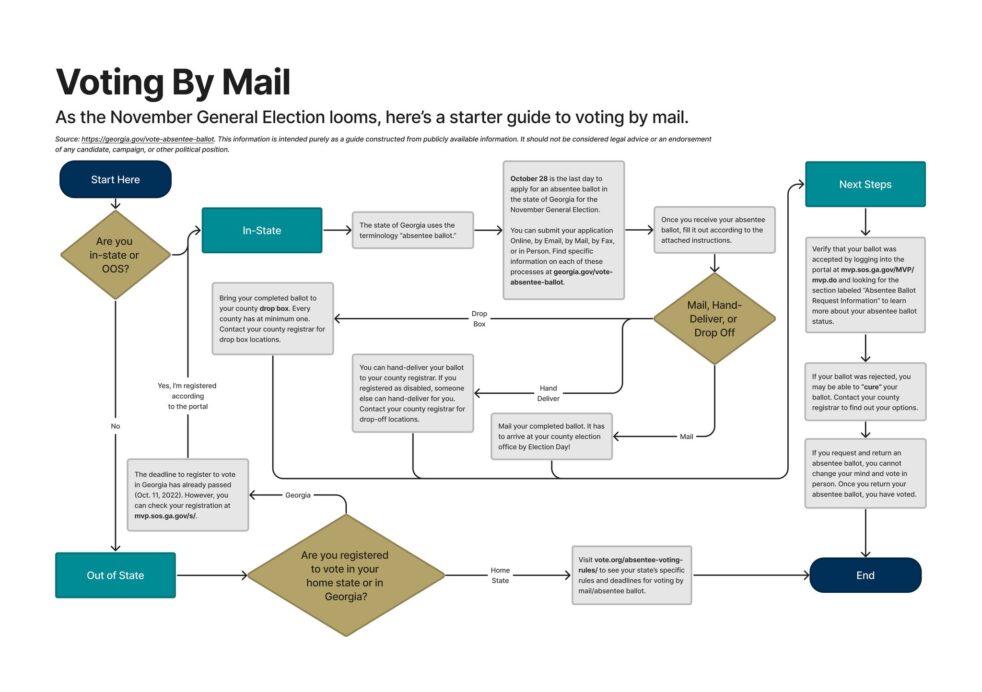Since the 2020 general election that elected President Joe Biden and Vice President Kamala Harris into office, the 2022 midterm election on Nov. 8 is consequential in determining the political climate of the United States until the next presidential election in 2024. Held in every state, the midterm elections allow voters to participate in an essential civic liberty and democratically elect senators and representatives to the United States Senate and House of Representatives. Aside from Congress, many states have gubernatorial candidates on the ballot, along with elections for Secretary of State, Attorney General and state executive seats.
The registration deadline to sign up to vote in the midterms closed this past week on Oct. 11. Students and faculty with permanent residence in Fulton County will have the opportunity to vote early and in-person at the Ferst Center for the Arts from Oct. 25-Oct. 26 from 8:30 a.m.-4 p.m.
Additionally, Fulton County residents can also vote early on Oct. 22 at the High Museum of Art and for Tech students, there will be a bus route running from the transport hub to the museum between 12 p.m. and 6 p.m.
For out-of-state students with voting registration outside of Georgia, the deadline to request an absentee ballot varies across different states and can be found on a respective state’s government-controlled voting website or on vote.org/absentee-voting-rules/.
For the state of Georgia specifically, the deadline for the County Board of Registrar’s Office to receive the absentee ballot application is Oct. 28 (11 calendar days before Nov. 8).
All ballots must be received by the corresponding county election office for voters by Election Day for in-country voters.
There are a few ways for voters to submit their absentee ballot in Georgia to make sure that it gets received by the deadline. To avoid invalidation of the ballot, voters should ensure that the ballot is filled out correctly and that the outer oath envelope has all of the required information.
For ballot submissions, voters have the opportunity to mail-in, hand-deliver to the county’s election office, drop-off at the county’s drop-box, submit on the online portal and email or fax to the County Board of Registrar’s Office. More specific details on absentee voting criteria in Georgia can be found on georgia.gov/vote-absentee-ballot.
Different states have specific rules for requesting absentee ballots. The primary difference is that states have varying no excuse versus excuse policies on qualifying for absentee voting. No excuse absentee voting adjudicates that anyone in the no excuse state can request an absentee ballot as a means of casting a vote in the election, whereas excuse absentee voting directs that individuals must be out-of-state on Election Day or have a physical disability keeping them from voting in-person, to name a few of the potential accepted excused.
Absentee ballot rules for each state can be checked on vote.org/absentee-voting-rules/.
Furthermore, the cure process is a system enacted by some states where voters have the ability to correct their ballots in order to get them counted. In a majority of cases, invalid ballots result due to missing or mismatched voter signature, a spoiled ballot or failure to seal the ballot in the secrecy envelope.
In order to track the status of ballots, individuals should keep an eye out for emails and other communications by the county elections office. 45 states and Washington D.C. allow voters to track mail-in ballots and this information for each applicable state can be viewed at vote.org/ballot-tracker-tools/.
For voters with disabilities, the U.S. Election Assistance Commission has compiled a list of resources in accordance with the Americans with Disabilities Act (ADA), the Department of Justice and the United States Access Board to ensure that voting is accessible for all persons.
These resources can be accessed by voters directly at eac.gov/voter_resources/resources_for_voters_with_disabilities.aspx.
For individuals wishing to vote in-person on Election Day, they can locate their polling location by checking their state’s voting website or by using the online Polling Place Locator on vote.org/polling-place-locator/.
